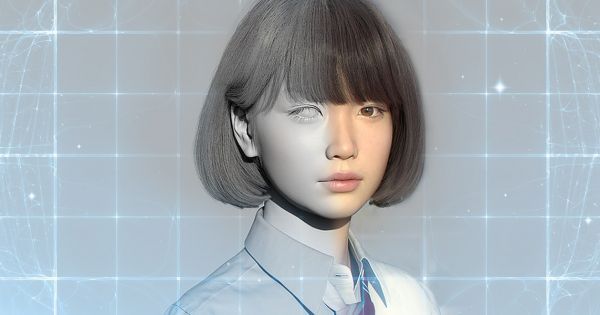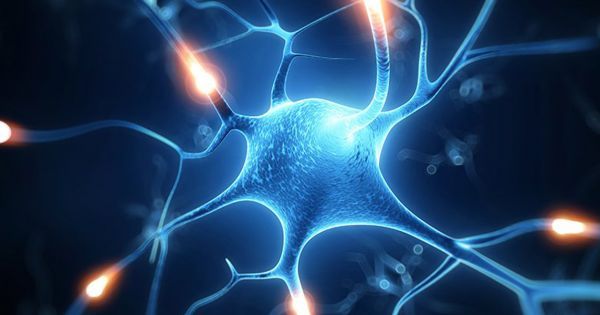“Asia Blog spoke to Parata ahead of the launch of the Center for Global Education at Asia Society to discuss the importance of globally-minded future generations.”


“Asia Blog spoke to Parata ahead of the launch of the Center for Global Education at Asia Society to discuss the importance of globally-minded future generations.”
When we as a global community confront the truly difficult question of considering what is really worth devoting our limited time and resources to in an era marked by such global catastrophe, I always find my mind returning to what the Internet hasn’t really been used for yet—and what was rumored from its inception that it should ultimately provide—an utterly and entirely free education for all the world’s people.
In regard to such a concept, Bill Gates said in 2010, “On the web for free you’ll be able to find the best lectures in the world […] It will be better than any single university […] No matter how you came about your knowledge, you should get credit for it. Whether it’s an MIT degree or if you got everything you know from lectures on the web, there needs to be a way to highlight that.”
That may sound like an idealistic stretch to the uninitiated, but the fact of the matter is universities like MIT, Harvard, Yale, Oxford, The European Graduate School, Caltech, Stanford, Berkeley, and other international institutions have been regularly uploading entire courses onto YouTube and iTunes U for years. All of them are entirely free. Open Culture, Khan Academy, Wikiversity, and many other centers for online learning also exist. Other online resources have small fees attached to some courses, as you’ll find on edX and Coursea. In fact, here is a list of over 100 places online where you can receive high quality educational material. The 2015 Survey of Online Learning revealed a “Multi-year trend [that] shows growth in online enrollments continues to outpace overall higher ed enrollments.” I. Elaine Allen, co-director of the Babson Survey Research Group points out that “The study’s findings highlight a thirteenth consecutive year of growth in the number of students taking courses at a distance.” Furthermore, “More than one in four students (28%) now take at least one distance education course (a total of 5,828,826 students, a year‐to‐year increase of 217,275).” There are so many online courses, libraries of recorded courses, pirate libraries, Massive Open Online Courses, and online centers for learning with no complete database thereof that in 2010 I found myself dumping all the websites and master lists I could find onto a simple Tumblr archive I put together called Educating Earth. I then quickly opened a Facebook Group to try and encourage others to share and discuss courses too.
The volume of high quality educational material already available online is staggering. Despite this, there has yet to be a central search hub for all this wonderful and unique content. No robust community has been built around it with major success. Furthermore, the social and philosophical meaning of this new practice has not been strongly advocated enough yet in a popular forum.
There are usually a few arguments against this brand of internet-based education. One of the most common arguments being that learning online will never be learning in a physical classroom setting. I will grant that. However, I’ll counter it with the obvious: You don’t need to learn everything there is to learn strictly in a classroom setting. That is absurd. Not everything is surgery. Furthermore, not everyone has access to a classroom, which is really in a large way what this whole issue is all about. Finally, you cannot learn everything you may want to learn from one single teacher in one single location.
Another argument pertains to cost, that a donation-based free education project would be an expensive venture. All I can think to respond to that is: How much in personal debt does the average student in the United States end up in after four years of college? What if that money was used to pay for a robust online educational platform? How many more people the world over could learn from a single four-year tuition alone? These are serious questions worth considering.
Here are just a few major philosophical points for such a project. Illiteracy has been a historic tool used to oppress people. According to the US Census Bureau an average of one billion more people are born about every 15 years since 1953. In 2012 our global population was estimated at 7 billion people. Many of these individuals will be lucky to ever see the inside of a classroom. Today nearly 500 million women on this planet are denied the basic freedom to learn how to read and write. Women make up two-thirds of total population of the world’s illiterate adults. It is a global crime perpetuated against women, pure and simple.
Here is another really simple point: If the world has so many problems on both a local and a global scale, doesn’t it make sense to have more problem solvers available to collaborate and tackle them? Consider all these young people devising ingenious ways to clean the ocean, or detect cancer, or power their community by building windmills; don’t you want many orders of magnitude more of all that going on in the world? More people freely learning and sharing what they discover simply translates to a higher likelihood of breakthroughs and general social benefit. This is good for everyone. Is this not obvious?
Here is one last point: In terms of moral, social, and philosophical uprightness, isn’t it striking to have the technology to provide a free education to all the world’s people (i.e. the internet and cheap computers) and not do it? Isn’t it classist and backward to have the ability to teach the world yet still deny millions of people that opportunity due to location and finances? Isn’t that immoral? Isn’t it patently unjust? Should it not be a universal human goal to enable everyone to learn whatever they want, as much as they want, whenever they want, entirely for free if our technology permits it? These questions become particularly deep if we consider teaching, learning, and education to be sacred enterprises.

“The biggest challenges facing the rich world today are persistent unemployment, widening income inequality, and accelerating climate change. … In Reinventing Prosperity, Graeme Maxton and Jorgen Randers take a radically different approach and offer thirteen politically feasible proposals to improve our world.”
Winfried Hensinger likes Star Trek. “It goes all the way back to primary school,” said the director of the Sussex Centre for Quantum Technologies in England. “I wanted to be science officer on the Enterprise, so I worked out in about grade five that I wanted to study physics.”
Today, his day-to-day work on abstract notions of quantum mechanics would make even Spock’s ears perk up.
“[Quantum computing] has a huge appeal for young people,” Hensinger told Digital Trends, “because it’s basically science fiction.” When he started in the field, it was largely confined to theoretical study. Today, the most promising projects are within reach of producing a universal quantum computer — something that was as sci-fi as Star Trek just a few years ago.

If I had to pick my least favorite subject in high school, it would be physics.
The concepts themselves were challenging. The math was even more challenging.
However, my views on physics quickly changed when my teacher mentioned the words “quantum mechanics.”
He refused to discuss it, saying it was beyond the scope of our class. However, my curiosity was piqued.
“The whole model of education, of stuffing information into kids’ minds is very much obsolete, since we carry all the knowledge of the world on our belts… The knowledge we carry around with us is only going to get ever more rich, and it’s going to become more and more intimately integrated with our lives.” says Kurzweil.
While traditional education has revolved around rote memorization and standardized testing, the one-size-fits-all model of learning pales in comparison to passionately engaging in problems we’re personally interested in solving.
Even today, beginning to treat education as doing—not thinking only—can positively impact society as successful projects outweigh abstract degrees and credentials. Understanding what it takes to solve a complicated problem, according to Kurzweil, is far more beneficial than attempting to “make a living.”

And, we all have heard all of the horrorr stories of a botch surgery or treatment performed by a MD who was a fraud. Well, our friends on the Dark Web are at work again in supplying anyone willing to pay fake diplomas & certifications. The challenge is how do companies and agencies validate? Something to ponder as we all know hackers can also forge educational records as well.
Criminals on the Dark Web (a lawless, unregulated part of the Internet) are supplying fake diplomas and employment certifications to anyone with a few hundred bucks.
According to Israeli threat intelligence firm Sixgill, people are even hiring hackers to penetrate university computer systems to alter grades.
The company has pinpointed multiple vendors selling degrees and accreditation that can easily be mistaken for being legitimate, so the market for fraudulent documents is booming.

Saya is a computer-generated school girl created by Japanese artists Teruyuki Ishikawa and Yuka Ishikawa. She looks so detailed that she has broken past the uncanny valley, and she could herald a new era in CGI.
Japanese artists Teruyuki Ishikawa & Yuka Ishikawa (a.k.a Telyuka) have given birth to Saya, and she’s remarkable. But despite how realistic she may look, she’s not real. Rather, she’s a computer-generated rendition of a school girl.
Telkuya started the Saya project in 2015, and they have been working to constantly improve her—make her more detailed and more life-like.

New research suggests that nerve cells may be able to repair themselves by mobilizing mitochondria by removing a certain protein in cells. This may help combat neurological diseases such as Alzheimer’s in the near future.
The Mitochondria is the powerhouse of the cell. We all know that. It causes reactions that generate adenosine triphosphate (ATP), a source of chemical energy in a cell. A typical animal cell contains 1000 to 2000 mitochondria. Yet, that’s not all we learned in high school biology. Remember that neurons or nerve cells do not have the ability to repair themselves once damaged? Well, these two facts have stirred quite a bit of interest.
Scientists have found out that nerve cell regeneration is possible. Researchers from National Institute of Neurological Disorders and Stroke in the US restored mitochondrial mobility in a group of mice and observed regeneration of nerve cells.
Thanks for 5,000 Subscribers!
Follow me on Instagram @ DisneylandHacker.
This is a video on new proof on walt disney frozen body. We are currently looking for the walt disney frozen body pictures. But we belive that walt disney cryogenically frozen and we are trying to get to the truth of it! And we know he was walt disney frozen! WE are working on a cryonics documentary that should have enough proof! Its the cryonics death in the deep freeze which lots of celebs and people of power are doing now adays! Mr disney walt cryogenic! We know the truth! We will find you! The disney cryogenic myth is no myth at all we will prove it one day! Its only a matter of time! Who else belives in the walt disney cryogenics myth? Its about time we start adding the clues togather to find the answer that we were lied too! Its the same ol walt disney cryogenics myth that they keep joking about saying its not real! Why do you think they made the movie frozen? To cover up the disney cryogenically frozen name when you google it?This disney cryogenics is proof right here! Theres no disney cryogenics debunked at all evidence!